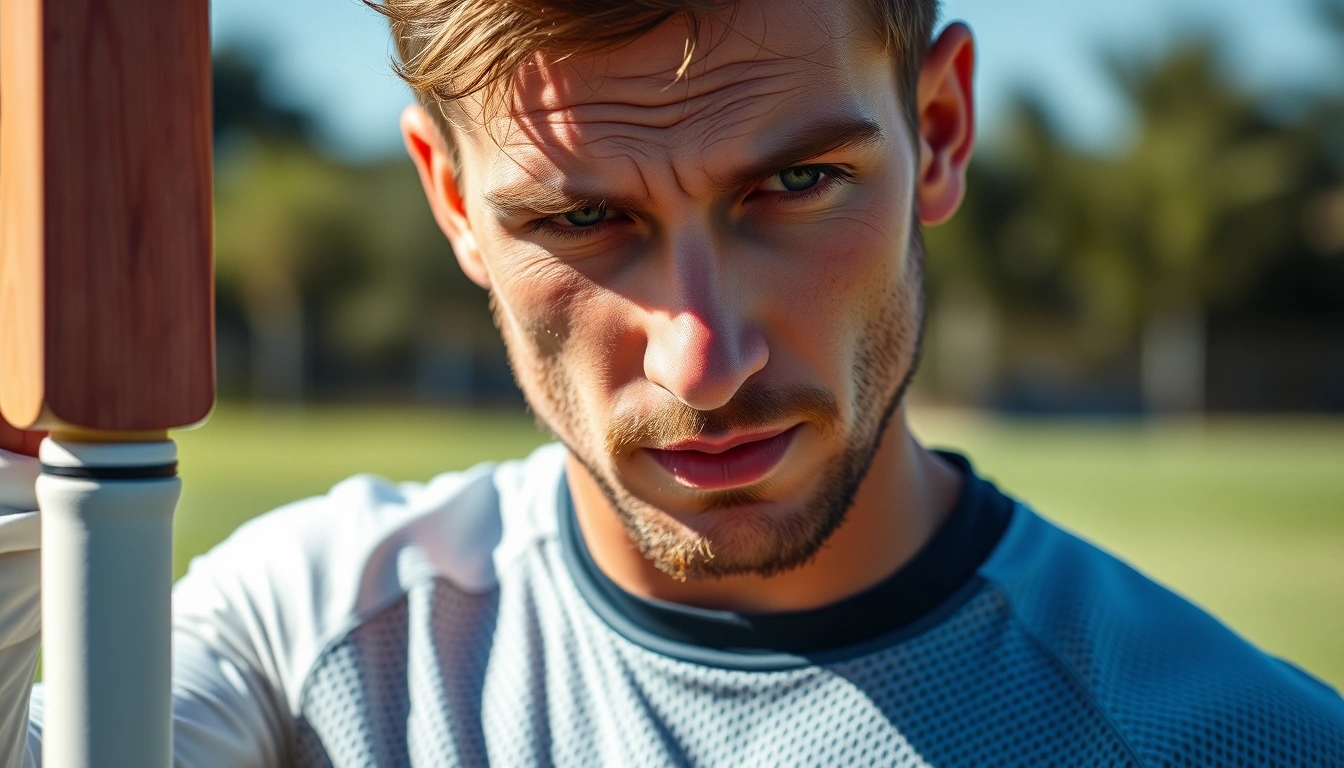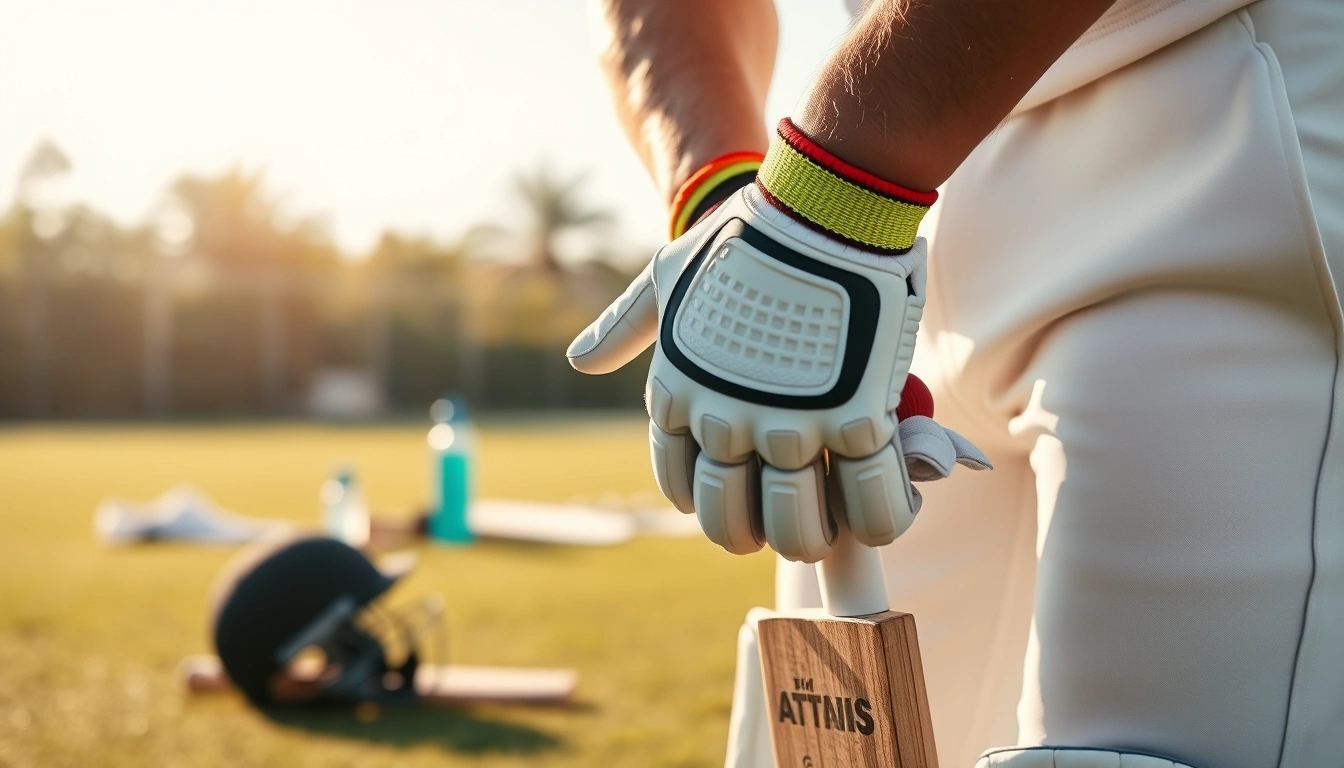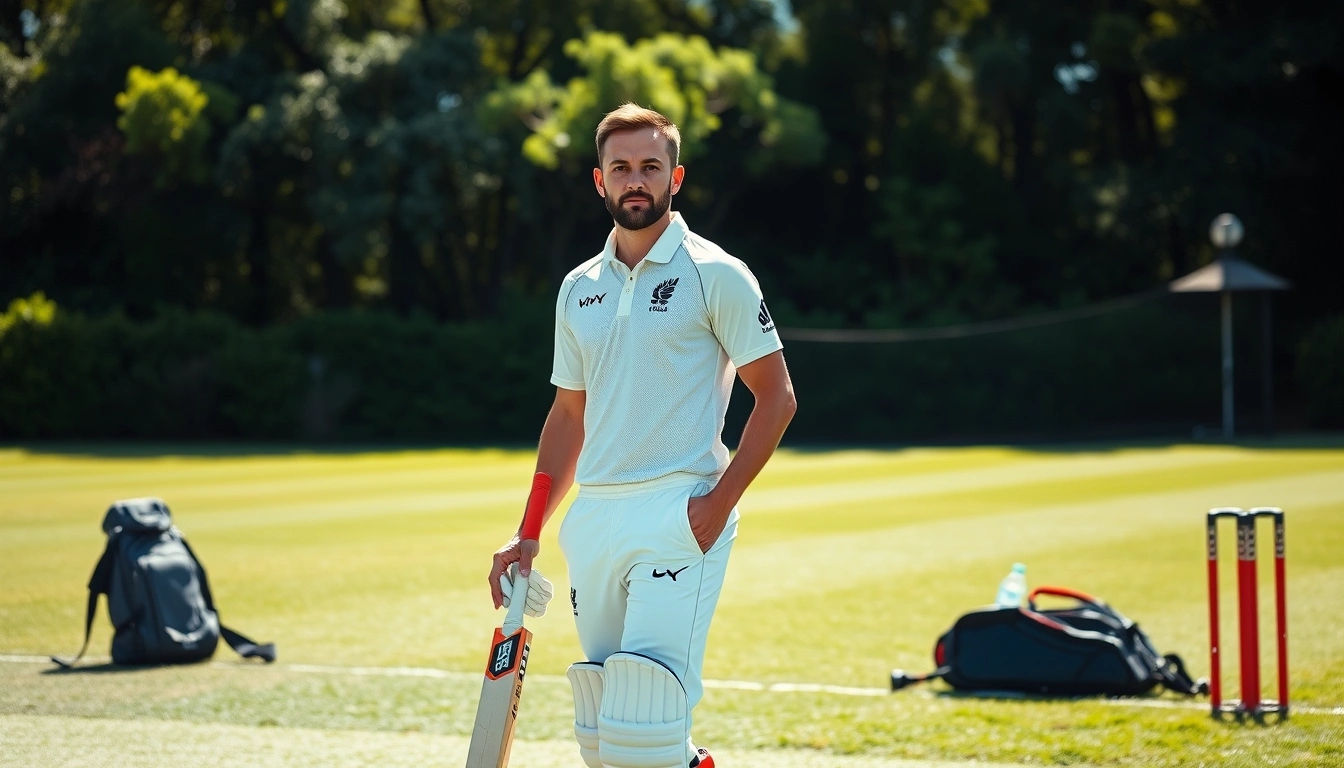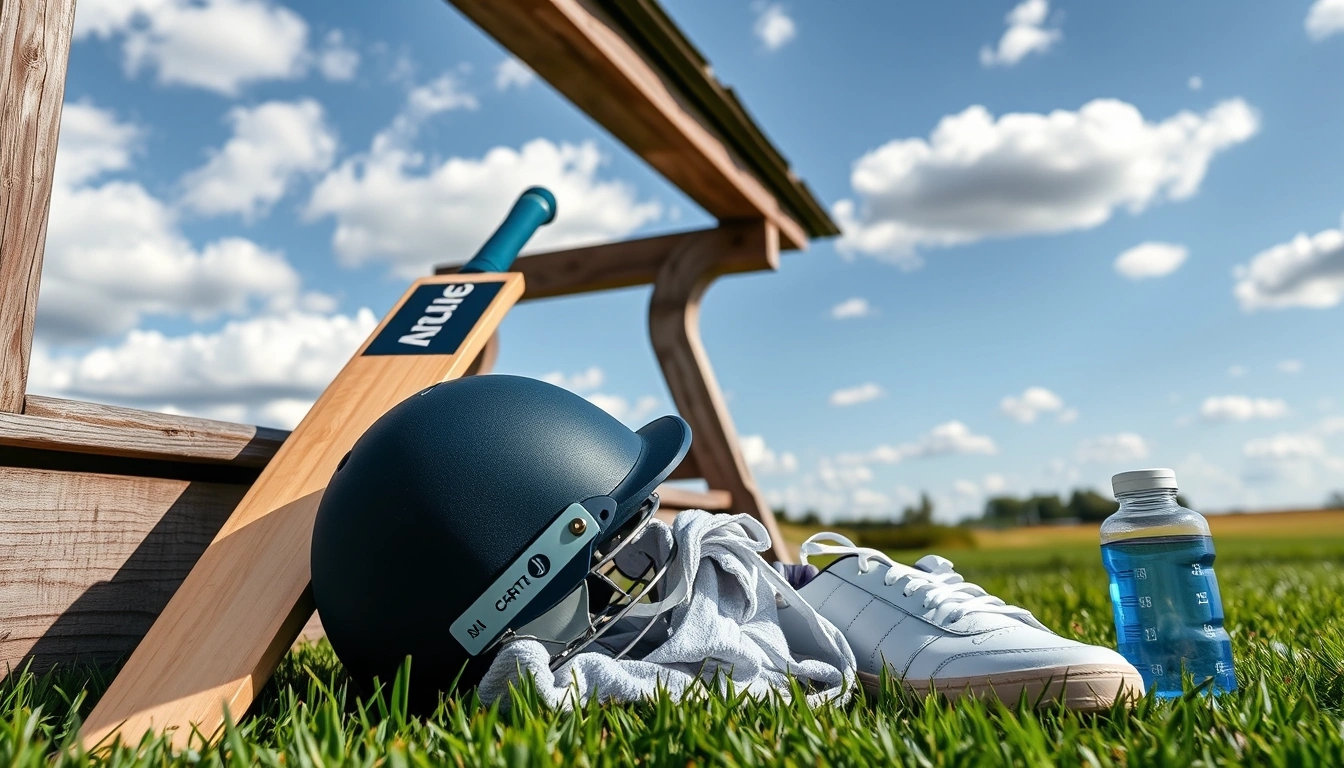Cricket practice under the blazing summer sun? Yeah, it’s a sweaty, sun-drenched battlefield out there. You’re not just battling bowlers and fielders, you’re fighting the heat, sweat, and that annoying sticky feeling that makes you want to toss your gear and call it a day. So, what’s the secret weapon? The right clothing, of course! But navigating through the maze of fabrics, fits, and fancy tech gear can feel like decoding some cricketing Da Vinci Code. Let’s break it down, no fluff, just the stuff you need to stay cool, comfy, and ready to smash those sixes.
Picking the Perfect Fabric
- Cotton: Old faithful. Breathable and soft, but beware — it soaks up sweat like a sponge and stays wet. Not ideal if you want to avoid the soggy look.
- Polyester: The synthetic hero. Dries fast and doesn’t cling to your body, but sometimes feels a bit plasticky and can trap odors.
- Tech Fabrics: Think of these as the fancy gadgets of cricket wear — moisture-wicking, breathable, and designed to keep you dry. They’re pricier but worth every penny if you’re serious about comfort.
| Fabric | Pros | Cons |
|---|---|---|
| Cotton | Breathable, comfortable | Retains sweat, slow drying |
| Polyester | Quick-drying, lightweight | Can trap odors, less natural feel |
| Tech Fabrics | Moisture-wicking, breathable | Expensive |
Moisture-Wicking: Your New Best Friend
No one wants to look like they just jumped into a pool mid-practice. Moisture-wicking gear pulls sweat away from your skin and spreads it out so it evaporates quickly. It’s like having your own personal air conditioner. Trust me, once you go wicking, you don’t go back. Plus, it helps prevent chafing and keeps your skin happy.
Lightweight and Breathable Tops
Forget those thick, heavy shirts your granddad used to wear. You want something light, airy, and preferably with mesh panels or ventilation zones. This lets air flow, cools you down, and keeps your eyes on the ball instead of on your overheating body. Bonus points if it’s got UV protection — because sunburns are no joke.
- Tip: Look for tops labeled “quick-dry” or “breathable” for best results.
- Pro-tip: A loose fit can sometimes be better than tight — it helps airflow.
Shorts or Long Pants? The Great Cricket Debate
Some swear by long pants for protection from grass stains and sunburn, others prefer shorts for freedom of movement and airflow. If you’re sweating buckets, shorts might be your jam. But if you’re dealing with rough pitches or pesky bugs, long pants with light, breathable fabric are the way to go. Honestly, try both and see what feels right.
Don’t Forget Your Feet!
Your shoes are the unsung heroes of cricket practice. Summer practice means you’ll be sweating there too, so breathable cricket shoes with good grip and arch support are non-negotiable. Avoid old, worn-out trainers unless you want blisters and a bad time.
Sun Protection: More Than Just Clothes
Sunscreen is your best mate — slap it on before you even think about stepping outside. Hats with wide brims or caps with neck flaps can save you from turning lobster-red. Sunglasses? Absolutely, especially polarized ones to cut glare. Remember, cricket isn’t just about batting and bowling; it’s about surviving the sun too.
Quick Checklist for Summer Cricket Practice Gear
- Moisture-wicking, breathable top (preferably with UV protection)
- Lightweight shorts or breathable long pants
- Breathable cricket shoes with good grip
- Wide-brimmed hat or cap
- Sunscreen (SPF 30+ recommended)
- Polarized sunglasses
- Optional wristbands or sweatbands to keep sweat off your hands
So, next time you hit the pitch, don’t just throw on any old tee and shorts. Gear up smartly, keep the sweat in check, and focus on your game — because smashing sixes is way more fun when you’re not battling your own clothes for comfort.
Choosing the right fabric for summer cricket practice
Alright, so you’re gearing up for cricket practice under the blazing sun, and the big question hits you like a fast ball: cotton, polyester, or some fancy tech fabric? Let’s cut through the jargon and sweat to figure out what really keeps you dry, cool, and not looking like you’ve just taken a dip in a swamp.
First off, cotton. It’s the old faithful, the fabric grandma swears by. Soft, breathable, and oh-so-comfy, cotton feels great on your skin. But here’s the kicker — cotton loves to soak up sweat like a sponge. So while you might feel fresh at the start, by the time you’re halfway through those sprints or batting drills, you’ll be rocking a soggy, heavy shirt that sticks to your back like glue. Not exactly the look you want when you’re trying to impress the coach or your mates.
- Pros of Cotton: Breathable, natural, soft.
- Cons of Cotton: Absorbs sweat, dries slowly, heavy when wet.
Now, polyester comes strutting in like the slick new kid on the block. It’s synthetic, yes, but it’s engineered to wick moisture away from your skin — fancy talk for “keeps you dry by pushing sweat to the surface where it evaporates.” This means you won’t feel like you’re wearing a wet towel. Plus, polyester dries faster than cotton, so you’re less likely to get that clammy, uncomfortable feeling. But beware, some cheaper poly fabrics can trap heat and make you feel like you’re in a sauna. So, quality matters here.
| Fabric | Breathability | Moisture Management | Comfort in Heat |
|---|---|---|---|
| Cotton | High | Poor | Moderate |
| Polyester | Moderate | Excellent | Good (depends on quality) |
| Technical Fabrics (e.g. Coolmax, DryFit) | High | Superior | Excellent |
Speaking of technical fabrics, this is where the fancy stuff comes in. Brands slap on names like “Coolmax,” “Dri-FIT,” or “ClimaCool,” but what they really mean is “we’ve engineered this fabric to keep you cool, dry, and smelling less like a locker room.” These fabrics are usually polyester blends with special weaves or treatments that boost airflow and wick sweat faster than you can say “how hot is it today?” They’re a bit pricier, sure, but if you’re serious about cricket and hate feeling like a soggy mess, they’re worth every penny.
Quick Tips for Picking Your Fabric:
- Don’t just grab any cotton tee — look for lightweight, loose weaves if you must.
- If you go polyester, check reviews or tags for moisture-wicking claims.
- Invest in at least one technical fabric top for those brutally hot days.
In the end, it’s about what feels right for you. Some players swear by the natural feel of cotton despite its flaws; others won’t touch anything but high-tech gear. Just remember — your fabric choice can make the difference between crushing sixes or wishing you were anywhere but out in that heat.
So, next time you’re suiting up for summer cricket, think less about the brand and more about what’s hugging your skin — because that’s the real game-changer.
Importance of moisture-wicking clothing
Alright, let’s get real for a moment. When you’re out there on the cricket pitch in the blazing summer heat, sweat is basically your unwanted but inevitable sidekick. You’re not just sweating a little; you’re drenched, soaked, looking like you took a spontaneous dive into a pool without the fun part. And honestly, nobody wants that soggy, sticky feeling messing with their game. This is where moisture-wicking clothing steps in like a superhero in disguise. It’s not just some fancy marketing buzzword; it actually changes the way you experience those long, grueling summer practice sessions.
So, what’s the deal with moisture-wicking gear? Simply put, it’s designed to pull sweat away from your skin and push it to the fabric’s surface where it evaporates quickly. Unlike cotton, which just soaks up sweat and turns into a heavy, clingy mess, moisture-wicking fabrics keep you feeling dry and light. Imagine running between the wickets without that annoying wet cling to your shirt — pure bliss, right?
- Stay Dry, Stay Cool: The primary job of moisture-wicking fabrics is to keep your skin dry. When sweat evaporates faster, your body cools down more efficiently. This means less overheating and more focus on smashing those sixes instead of wiping your brow every five seconds.
- Comfort is King: Nobody enjoys the chafing and irritation that comes with damp clothes. Moisture-wicking gear reduces friction, making sure you don’t end up with red, sore spots after practice.
- Quick Drying: If you’re training multiple times a day, this feature is a lifesaver. Your clothes dry faster, so you’re not walking around in damp gear all day long.
| Fabric Type | Moisture Wicking Ability | Pros | Cons |
|---|---|---|---|
| Cotton | Low | Soft, breathable | Absorbs sweat, heavy when wet |
| Polyester | High | Dries fast, lightweight | Can smell if not washed properly |
| Nylon blends | High | Durable, stretchy | Less breathable than polyester |
Now, don’t get me wrong — moisture-wicking clothing isn’t some magic potion. It won’t stop you from sweating buckets if the sun decides to roast you alive. But it sure as heck makes the experience way more bearable. Plus, it keeps your gear in better shape because sweat doesn’t sit and soak into the fabric, which means less funky odors and longer-lasting clothes.
Here’s a little pro tip: if you’re shopping for cricket practice wear, check the labels for terms like “Dri-FIT,” “Coolmax,” or “Climalite.” These are brands’ fancy names for moisture-wicking tech, and trust me, your skin will thank you.
In the end, moisture-wicking clothing isn’t just about comfort — it’s about performance. When you feel good, you play better. So next time you’re suiting up for that summer cricket grind, think beyond just style or tradition. Invest in gear that actually works for you, not against you.
Summary:
- Moisture-wicking fabrics pull sweat away and dry fast.
- They keep you cooler, drier, and more comfortable.
- Look for polyester or nylon blends with moisture-wicking tech.
- Better gear better practice better game.
So yeah, sweating is part of the game, but looking like you just swam laps in your kit? That’s totally avoidable. Moisture-wicking clothing is the unsung hero you didn’t know you needed.

Why lightweight and breathable tops matter
Alright, let’s get real for a second. When you’re out there on the cricket pitch under a blazing summer sun, the last thing you want is to be weighed down by a heavy, thick shirt that’s sucking the life out of you faster than a bad run chase. Seriously, those bulky tops? They’re like wearing a woolly jumper in the Sahara—just no. You want to feel free, light, and able to move without your shirt sticking to you like glue. That’s where lightweight and breathable tops come into play, and trust me, they’re a total game changer.
Think about it: cricket is a sport that demands a lot of movement—running between wickets, diving for catches, throwing the ball with precision. If your top is trapping heat and sweat, you’re not just uncomfortable, you’re distracted. And distraction on the pitch? That’s how you miss that easy catch or mess up a straightforward run. So, opting for a shirt made from fabrics that breathe is not just a comfort choice, it’s a strategic one.
- Breathability: Materials like mesh or specially engineered polyester blends allow air to flow through the fabric, keeping your skin cool and dry.
- Lightweight: You want something that feels almost like a second skin, not a suit of armor. The lighter the fabric, the less you’ll feel weighed down.
- Quick-drying: Sweat happens. But with the right top, it won’t linger and make you feel like a soggy mess.
| Fabric Type | Pros | Cons |
|---|---|---|
| Cotton | Soft, natural, breathable | Absorbs sweat, slow drying, can feel heavy |
| Polyester | Lightweight, moisture-wicking, quick-drying | Less breathable than natural fibers, can smell if not washed properly |
| Technical Fabrics (e.g. Coolmax, DryFit) | Excellent moisture management, very breathable, durable | Usually more expensive |
Now, I get it. Some folks swear by their cotton tees because they’re soft and feel natural. But here’s the kicker—cotton soaks up sweat and holds onto it. Imagine running around with a wet blanket stuck to your back. Not exactly the recipe for peak performance. On the flip side, polyester and those fancy technical fabrics are designed to pull moisture away from your skin and let it evaporate quickly. You stay dry, you stay cool, and you stay focused.
And don’t overlook the cut and fit of your top either. Baggy shirts might seem like a good idea for airflow, but they can get in your way or snag on gear. Slimmer, athletic cuts that still allow movement are the sweet spot. Plus, some tops come with mesh panels in high-sweat zones (think underarms and back), which is a neat little bonus.
Quick tips for choosing your summer cricket top:
- Look for light colors—they reflect sunlight rather than absorb it.
- Check if the fabric has UPF protection for extra sun defense.
- Try it on and move around—comfort isn’t just about fabric, it’s about how it fits your body.
In the end, your goal is simple: stay cool, stay dry, and keep your head in the game. Heavy, thick shirts? They can take a backseat. Lightweight, breathable tops? That’s your summer cricket MVP. So next time you gear up, think less “sweat lodge” and more “breeze through the crease.” Your body—and your batting average—will thank you.
Picking the perfect cricket shorts
Alright, so you’re staring down the age-old dilemma: long pants or shorts for cricket practice during those blazing summer days? It’s not just about style points here; it’s about what keeps you nimble, cool, and ready to chase down that ball without feeling like you’re wearing a sauna. Let’s get into the nitty-gritty of each option and see what really works.
First up, long pants. They’ve been the traditional go-to for cricket players for ages, and for good reasons. They offer better protection — think scrapes, sunburns, and those pesky bugs that love to bite when you’re out in the grass. Plus, if you’re practicing on a pitch with a bit of rough terrain, long pants can save you from some nasty scratches. However, here’s the catch: long pants can get unbearably hot and sweaty in the summer heat. Unless you’re rocking some high-tech breathable fabric, it might feel like you’re wrapped in a blanket that’s been left in the dryer for too long.
| Aspect | Long Pants | Shorts |
|---|---|---|
| Protection | Excellent – guards against scrapes, sunburn, insects | Minimal – leaves legs exposed |
| Comfort in Heat | Can be hot and sweaty | Cool and breezy |
| Mobility | Good, but can feel restrictive | Excellent – more freedom to move |
| Style | Classic cricket look | Casual and sporty |
Now, shorts are where the cool kids hang out during summer practice. They’re lightweight, let your legs breathe, and keep you feeling fresh when the sun’s trying to melt your brain. But, and it’s a big but, shorts mean you’re exposing your legs to the elements — sunburn, grass stains, and the occasional mosquito ambush. Not to mention, if you’re diving or sliding a lot, those knees might end up looking like they’ve been through a meat grinder.
- Tip #1: If you go with shorts, slap on some sunscreen and maybe consider knee pads for those aggressive fielding drills.
- Tip #2: Look for shorts made with moisture-wicking fabrics to keep sweat off your skin.
- Tip #3: Don’t be shy to mix it up — some players swear by switching between shorts and pants depending on the day’s weather or practice intensity.
Honestly, it boils down to personal preference and what you’re comfortable with. If you’re the type who hates feeling weighed down, shorts might be your best buddy. But if you’re all about that traditional vibe and extra coverage, long pants are still the champ. Just remember, no matter what you pick, the fabric matters just as much as the length — breathable, quick-drying materials are your friends.
At the end of the day, cricket practice is about performance, not fashion shows. But hey, looking good while smashing sixes doesn’t hurt either. So, pick your poison wisely and get out there!
The role of cricket shoes in summer practice
Alright, let’s get real for a second: your feet are the unsung heroes of cricket practice, especially when the sun’s blazing like it’s auditioning for a sauna commercial. You might be all about that perfect shot or the slickest catch, but if your shoes are a disaster zone, your whole game can go sideways faster than a misfield. So, what’s the deal with cricket shoes in summer? Why should you even care? Well, here’s the lowdown.
First off, grip is king. Nothing kills momentum like slipping on the pitch just when you’re about to smash a six or sprint for the ball. Cricket shoes designed for summer practice usually come with specialized sole patterns that dig into the grass or turf, giving you that rock-solid footing. Forget those old trainers with worn-out soles; they’re about as useful as a chocolate teapot here.
| Feature | Why It Matters | What to Look For |
|---|---|---|
| Grip | Prevents slipping, supports quick moves | Studded or patterned rubber soles |
| Support | Protects ankles and reduces fatigue | Good arch support, cushioned midsoles |
| Breathability | Keeps feet cool and dry | Mesh panels, moisture-wicking linings |
Now, about support: cricket involves a lot of sudden stops, pivots, and sprints. Shoes that don’t offer solid ankle and arch support? You’re basically begging for blisters, strains, or worse. Look for shoes with cushioned midsoles and reinforced sides—your feet will thank you after hours on the pitch. And hey, if you’re thinking, “I can just tough it out,” remember: injuries aren’t just painful, they bench you for weeks. Not cool.
Breathability is another biggie. Summer cricket practice means sweat, and lots of it. If your shoes are made of some heavy, non-breathable material, your feet will feel like they’re marinating in their own juices. Gross, right? Shoes with mesh panels or moisture-wicking linings help keep the air flowing and your feet dry. Plus, dry feet mean fewer blisters and less funky odor—win-win.
- Pro tip: Try to pick shoes with removable insoles. That way, you can air them out or replace them if they get stinky or worn down.
- Another tip: Don’t forget to break your shoes in before the big practice session. New shoes might look great, but they can cause blisters if you jump straight into a long game.
And here’s a little secret—sometimes the fanciest, most expensive shoes aren’t always the best fit for you. Everyone’s feet are different, and what works for your mate might feel like a torture device on your feet. So, try a few pairs, walk around a bit, maybe even jog if you can, before committing. Comfort beats brand name any day.
So, to wrap it up: your cricket shoes in summer practice aren’t just footwear; they’re your foundation. They need to grip like a champ, support like a pro, and breathe like a champ (did I say champ twice? Because it’s that important). Ignore them, and you’re just asking for trouble—and trust me, no one wants to be the guy limping off the field because of dumb shoe choices.
Summary Table:
| Key Aspect | Why It Matters | Summer-Specific Tip |
|---|---|---|
| Grip | Ensures stability on wet or dry grass | Look for rubber soles with good traction |
| Support | Prevents injuries during quick movements | Choose cushioned, ankle-supportive designs |
| Breathability | Keeps feet cool and dry to avoid blisters | Opt for mesh or ventilated uppers |
Remember, your feet carry you through every catch, run, and dive. Give them the love they deserve with the right cricket shoes this summer, and you’ll feel the difference—no more slipping, sliding, or sweaty misery. Now go on, lace up, and show that pitch who’s boss!

Sun protection essentials beyond clothing
Alright, so you’ve got your cricket whites on, your gear all set, but wait—don’t forget the sun! It’s not just about what you wear; the sun’s rays are sneaky little devils, ready to turn your glorious innings into a lobster-red disaster. You might think, “Eh, I’m tough, I can handle a bit of sun,” but trust me, a scorched scalp and burnt eyeballs aren’t exactly the trophies you want to bring home. Here’s the lowdown on what you absolutely need beyond your kit to stay safe and still look like you mean business.
Sunscreen: Your Best Mate on the Pitch
First off, sunscreen isn’t optional. It’s your armor against those UV nasties. But not all sunscreens are created equal—don’t just grab the cheapest bottle and hope for the best. You want something with at least SPF 30, broad-spectrum protection (meaning UVA and UVB), and water resistance because, hello, sweat is inevitable. Slap it on generously at least 20 minutes before stepping out, and don’t be shy about reapplying every couple of hours, especially if you’re sweating buckets or wiping your face constantly.
| Type of Sunscreen | Pros | Cons |
|---|---|---|
| Chemical | Lightweight, invisible finish | Can irritate sensitive skin |
| Physical (Mineral) | Blocks UV rays immediately, good for sensitive skin | Sometimes leaves white residue |
Hats: Not Just a Fashion Statement
Now, about hats — they’re not just there to make you look like a cricket pro (though that’s a nice bonus). A wide-brimmed hat or a cap with a long bill can shield your face, neck, and ears, which are prime targets for sunburn. Bonus points if it’s made from breathable material because a sweaty head is nobody’s friend. And if you’re feeling extra cautious, some hats even come with neck flaps for that full-on sun-blocking vibe.
- Tip: Avoid dark-colored hats; they absorb heat. Go for light shades instead.
- Pro tip: A hat with a moisture-wicking sweatband keeps the sweat out of your eyes.
Sunglasses: Your Eyes Deserve Some TLC
Don’t underestimate the power of a good pair of sunglasses. UV rays don’t just mess with your skin; they can do a number on your eyes too. Squinting all day? Not only does it make you look like you’re trying to solve a mystery, but it also strains your eyes and can cause long-term damage. Pick sunglasses that block 99-100% of UVA and UVB rays and have polarized lenses to cut down glare from the pitch.
Quick Checklist for Sun Protection Essentials:- Broad-spectrum SPF 30+ sunscreen (water-resistant)- Wide-brimmed or ventilated cricket hat- UV-protective sunglasses with polarized lenses- Lip balm with SPF (don’t forget your lips!)- Lightweight, breathable neck gaiter or scarf (optional)
Look, sun protection isn’t glamorous, but it’s the unsung hero of your cricket kit. You want to be smashing sixes, not slathering aloe vera on your burnt skin. So, gear up smartly and give the sun the cold shoulder while you’re out there doing your thing. Trust me, your future self will thank you.
Accessories that make a difference
Alright, let’s get real for a moment about cricket accessories. You know those wristbands, sweatbands, and the flashy gloves that some players sport like they’re the crown jewels? Yeah, some of those are genuinely useful, while others… well, they’re mostly just for show. But which is which? Let’s break it down, no fluff.
Wristbands and sweatbands: These bad boys aren’t just fashion statements. They actually serve a practical purpose, especially when you’re sweating buckets under the blazing sun. Wristbands help absorb sweat so it doesn’t drip down to your hands, which can be a nightmare when you’re gripping the bat or ball. Sweatbands on the forehead do the same job, keeping sweat from blurring your vision or forcing you to wipe your face every two seconds (annoying, right?).
| Accessory | Function | Practicality |
|---|---|---|
| Wristbands | Absorb sweat, prevent slippage | High |
| Sweatbands | Keep sweat off face and eyes | High |
| Cricket Gloves | Protect hands, improve grip | Situational |
| Fancy Arm Sleeves | Mostly style, minor sun protection | Low |
Now, about those cricket gloves — not the flashy batting gloves, but the ones fielders sometimes wear. Sure, they add grip and protect your hands when you’re diving or catching, but unless you’re a wicketkeeper or a serious fielder, you might be overdoing it. Plus, some folks just wear them because they look cool or to mimic their cricket heroes. Hey, no judgment, but don’t expect gloves alone to turn you into the next big thing.
And then there’s the whole world of arm sleeves, compression gear, and those funky headbands. Some swear by them, claiming better blood flow or muscle support. Others? They say it’s just a gimmick. Honestly, if you’re not feeling any difference, it’s probably just a style choice. But hey, if it makes you feel like a champ, why not?
- Pro tip: Always test your accessories in practice before match day. Nothing worse than realizing your wristband slips or your gloves make your hands sweat more.
- Don’t over-accessorize. Too many bands and straps can get in the way or distract you.
- Sun protection gear like hats and sunglasses might not scream “cricket accessory,” but they’re just as important.
At the end of the day, accessories should enhance your performance, not complicate it. If you find yourself fiddling with your wristband every other minute or your gloves feel like a second skin that’s actually choking your hands, it’s time to rethink. Remember, the best gear is the one that lets you focus on the game, not your outfit.
Summary:- Wristbands & sweatbands: essential for sweat control.- Cricket gloves: useful, but not mandatory for everyone.- Arm sleeves & compression: mostly optional, style or minor benefits.- Test accessories in practice.- Avoid overdoing it to stay comfortable.
So next time you’re gearing up for that summer cricket practice, think twice before piling on every shiny accessory in your kit bag. Sometimes, less really is more — unless you’re trying to start a new trend, then by all means, rock those funky gloves and neon wristbands. Just don’t blame me if you end up more sweaty and distracted than ever.
Dealing with unpredictable weather
Ah, summer cricket practice — the sun blazing down, sweat dripping, and you’re all set to smash those sixes. But hold your horses! Just when you think it’s all clear skies and warm vibes, Mother Nature throws a curveball: surprise showers, sudden gusts of wind, or that sneaky drop in temperature. Yep, summer isn’t always sunshine, and if you’re not prepared, your practice session might turn into a soggy, miserable mess. So, what’s the game plan? Let’s dive into some smart strategies to tackle unpredictable weather without losing your cool (or your gear).
Layering like a pro: Sounds fancy, right? But it’s just about wearing the right stuff in the right order. Start with a moisture-wicking base layer — something that zaps sweat away from your skin faster than your teammate’s snarky comments. Then, add a lightweight mid-layer if the wind picks up or the sun takes a break. Finally, keep a packable waterproof jacket handy for those surprise rain showers. Trust me, nothing kills your vibe faster than being drenched in cotton that sticks to you like glue.
| Layer | Purpose | Fabric Suggestions |
|---|---|---|
| Base Layer | Wicks moisture, keeps skin dry | Polyester blends, nylon, merino wool |
| Mid Layer | Provides warmth, blocks wind | Light fleece, technical synthetic |
| Outer Layer | Waterproof, windproof | Packable rain jacket, breathable shell |
Now, quick-dry options are your best mates here. Imagine you’re caught in a sudden downpour mid-practice. If you’re rocking traditional cotton, you’re basically wearing a wet sponge, and your movement? Forget about it. But with quick-dry fabrics, your gear sheds water like a duck’s back, drying off in no time so you can get back to business without looking like a drowned rat.
- Tip 1: Avoid heavy cotton. It’s a moisture magnet and dries slower than your slowest teammate.
- Tip 2: Pack an extra set of clothes. Because, well, Murphy’s Law.
- Tip 3: Invest in a lightweight, breathable rain jacket. Bonus points if it folds into a tiny pouch.
And don’t forget about the wind. It’s sneaky, chillin’ your skin and messing with your focus. A windbreaker or a snug mid-layer can save you from turning into a shivering mess. Plus, layering lets you peel off or add on as the weather decides to play tricks.
Practical Weather Kit for Summer Cricket Practice:- Moisture-wicking base shirt- Lightweight mid-layer (fleece or synthetic)- Packable waterproof jacket- Quick-dry cricket shorts or pants- Extra socks and shirt (just in case)
In the end, dealing with unpredictable weather is all about being flexible — both in your gear and your mindset. Don’t let a surprise shower or a gust of wind throw you off your game. Layer smart, pick quick-dry fabrics, and keep a weather eye on the sky. Because in cricket, as in life, it’s not just about how hard you hit but how well you adapt.
So next time the clouds gather or the wind starts whispering, you’ll be ready — no soggy shirts, no shivers, just pure cricketing glory.

Cricket practice attire mistakes to avoid
Alright, let’s get real for a second. You show up to cricket practice looking like you just rolled out of bed, wearing that ancient T-shirt with suspicious stains and a pair of shorts that scream “last decade.” Trust me, your teammates notice. And no, they won’t just be silently judging you—they’ll probably roast you mercilessly. Avoid becoming the team’s favorite punchline by steering clear of these all-too-common cricket practice attire blunders.
1. Wearing the wrong fabric – cotton is NOT always king
Sure, cotton feels soft and comfy, but when you’re sweating buckets under the blazing sun, it turns into a soggy, clingy nightmare. You’ll look like you just jumped into a pool, and no one wants to see that. Instead, go for moisture-wicking fabrics like polyester blends or specialized sports materials designed to keep sweat at bay. Your skin will thank you.
| Fabric Type | Pros | Cons |
|---|---|---|
| Cotton | Soft, breathable | Absorbs sweat, stays wet, heavy |
| Polyester/Moisture-wicking | Dries quickly, lightweight | Less natural feel, can smell after long use |
| Technical/Sports fabrics | Engineered for performance, super breathable | Usually pricier |
2. Ignoring the importance of proper footwear
Look, cricket isn’t just about swinging the bat. Your feet do a lot of work too. Wearing generic sneakers or old, worn-out shoes is a rookie mistake. You need cricket shoes with good grip, ankle support, and breathability. Otherwise, you’re just asking for blisters, slips, and a whole lot of discomfort.
3. Overdoing it with accessories
We get it, wristbands and funky gloves look cool, but piling on every accessory without thinking about their function can weigh you down. If it doesn’t help you perform better or protect you, it’s probably just a fashion statement—and not the good kind. Keep it simple and practical.
- Wristbands: Great for sweat, but don’t overdo it.
- Sunglasses: Essential for glare but pick ones that don’t slip off.
- Hats: Sun protection is a must, but make sure they fit well.
4. Choosing clothes that are too tight or too loose
You’re not auditioning for a fashion show, but your clothes need to fit right. Too tight? You’ll feel restricted, and your movements will suffer. Too loose? You’ll be tripping over fabric or getting distracted by flapping sleeves. Aim for a balance—comfort and mobility are king.
5. Forgetting sun protection gear beyond clothes
Thinking a T-shirt and shorts are enough? Think again. Sunburns are no joke, and peeling skin isn’t a good look on or off the pitch. Sunscreen, hats, and UV-protection sunglasses are your best friends here. Don’t be “that guy” who looks like a lobster by the end of practice.
Quick checklist to avoid rookie mistakes:- Moisture-wicking tops, not cotton- Proper cricket shoes with grip- Functional accessories only- Clothes that fit well, not too tight or loose- Sun protection gear: sunscreen, hat, sunglasses
In the end, cricket practice is about honing your skills, not battling your own clothes. Avoid these mistakes, and you’ll not only feel better but also earn some serious respect from your mates. Because let’s face it, nobody wants to be the guy everyone laughs at—not on the pitch, not ever.
Budget-friendly cricket gear options
Look, not all of us are sitting on a pile of cash ready to splash on the latest cricket gear that looks like it’s fresh out of a sci-fi movie. Some of us gotta hustle, save, and still want to look and feel like a pro without selling a kidney. So, how do you pull off that cricket practice outfit without breaking the bank? Let’s dive into the nitty-gritty of budget-friendly cricket gear that actually works.
First off, don’t be fooled by the shiny, expensive brands. Sometimes, the local sports shops or online marketplaces have hidden gems that cost a fraction of the price but do the job just fine. Look for off-brand moisture-wicking shirts made from polyester blends—they’re often cheaper and just as good at keeping sweat off your back. And hey, if you find a cotton-polyester mix, that’s a win-win for breathability and durability.
| Gear Type | Budget Tip | Why It Works |
|---|---|---|
| Cricket Shirt | Polyester blend from local stores | Moisture-wicking & breathable without the hefty price tag |
| Shorts/Pants | Basic sports shorts with pockets | Light, cheap, and easy to move in |
| Shoes | Generic trainers with good grip | Comfortable and versatile for various pitches |
| Accessories | DIY wristbands or old sweatbands | Cheap and effective for sweat control |
Now, about shoes—don’t get me started on how some folks think you need those ultra-expensive cricket spikes to perform. Nah, mate. A decent pair of running shoes or trainers with a good grip can do wonders. Just make sure they’re comfortable and have some breathability. You don’t want your feet turning into a sauna by the end of practice.
- Tip 1: Check for sales or clearance racks. You’d be surprised what you can snag for half price.
- Tip 2: Consider second-hand gear. Used cricket equipment can be a goldmine if you know what to look for.
- Tip 3: Don’t buy everything at once. Prioritize essentials like a good shirt and shoes, then build up your kit gradually.
And let’s not forget the sun protection essentials. You don’t have to buy the most expensive UV-blocking hats or sunglasses. A simple cap from any sports brand and affordable sunglasses from a drugstore can keep you from looking like a lobster after practice.
Remember:- Moisture-wicking > pure cotton for summer- Lightweight > bulky gear- Comfort > flashy logos
At the end of the day, cricket is about skill, not your wardrobe. Sure, looking sharp feels good, but if your gear is making you sweat buckets or costing a fortune, you’re doing it wrong. Keep it simple, smart, and within your budget—because the only thing you should be spending big on is your passion for the game.
So, yeah, you can look and feel like a pro without draining your wallet. Just keep your eyes peeled for deals, be a little creative, and remember: performance beats price tags every single time.
How to maintain your cricket gear in summer
Alright, let’s be real — summer cricket practice is a sweaty, gritty ordeal. You’re out there smashing sixes, diving for catches, and by the end of the day, your gear looks like it’s been through a war zone. Sweat, dirt, and relentless sun don’t just test your stamina; they also take a serious toll on your clothes and shoes. If you’re not careful, your favorite cricket whites will turn into a sad, stained mess, and those once-comfy shoes might start to smell like a locker room nightmare. So, how do you keep your cricket kit fresh and long-lasting without turning into a laundry expert? Here’s the lowdown.
First things first: tackle the sweat ASAP. Sweat is the silent enemy of cricket gear. It soaks into fabric fibers and can cause stubborn stains and funky odors if left unattended. The moment you finish practice, don’t just toss your clothes in a heap. Instead, give them a quick rinse with cold water to wash away the sweat and grime. Cold water is your friend here — it prevents stains from setting and stops colors from fading.
| Step | Action | Why it matters |
|---|---|---|
| Rinse Immediately | Use cold water to rinse sweat and dirt | Prevents stains and odor buildup |
| Use Mild Detergent | Choose a gentle detergent suitable for sportswear | Protects fabric integrity and moisture-wicking properties |
| Air Dry | Dry in shade, avoid direct sunlight | Prevents fabric damage and color fading |
Next up, washing. Sure, you might be tempted to chuck everything in the washing machine with a heavy-duty detergent, but hold your horses. Harsh chemicals can wreck the technical fabrics that make your cricket wear moisture-wicking or breathable. Go for a mild detergent designed for sports clothes or delicate fabrics. Avoid fabric softeners — they might make your clothes feel soft but will ruin the moisture-wicking magic.
Now, drying — here’s where many players slip up. Tossing your cricket whites under the blazing sun to dry might seem like a good idea (hello, fast drying!), but the sun can bleach the fabric and cause it to weaken over time. Instead, find a shady spot with good airflow. Air drying is the way to go; it keeps your gear in shape and extends its life. And hey, it saves your wallet from having to replace gear every season.
- Pro tip: Turn your clothes inside out before drying to protect colors and logos.
- Don’t: Use the dryer — heat can shrink and damage cricket fabrics.
- Do: Hang shoes and gloves separately to air out and prevent odors.
Speaking of shoes, they deserve some love too. After a sweaty day on the pitch, remove the insoles and let your shoes breathe. Stuffing them with newspaper helps absorb moisture and keeps the shape intact. Avoid sealing them in plastic bags — that’s basically inviting mold and stink to move in rent-free.
Here’s a quick checklist for your summer cricket gear maintenance:
- Rinse clothes immediately after practice- Use gentle detergent, no fabric softeners- Air dry in the shade, inside out- Clean shoes and remove insoles- Stuff shoes with newspaper for moisture absorption- Store gear in a cool, dry place
Finally, don’t forget to inspect your gear regularly. Look out for loose stitching, worn-out soles, or fading fabric. Catching these issues early means you can fix them before they turn into costly replacements. Remember, cricket gear isn’t just about looking sharp; it’s about feeling comfortable and performing your best.
So, next time you’re dripping with sweat and dirt after a summer session, don’t just crash on the couch. Give your gear some TLC — trust me, it’ll thank you by sticking around for many more matches.

Personal style vs. functionality in cricket wear
So, the age-old debate: can you look cool on the cricket field and still smash those sixes without breaking a sweat? It’s a tricky balance, honestly. On one hand, you’ve got the fashion-forward players rocking the latest gear, looking like they just walked off a runway. On the other, there are the pragmatic folks who swear by comfort and performance, no matter how “boring” their kit looks. But here’s the kicker: you really don’t have to pick sides. You can have your cake and eat it too—well, if you know what to look for.
Let’s break it down. First, style is all about expressing yourself. Cricket’s no longer just a white-pants-and-shirt sport; it’s evolved. Bold colors, sleek cuts, and branded logos are everywhere. But, and this is a big but, flashy doesn’t always mean functional. Ever tried sprinting in a tight, non-breathable jersey? Not fun. You’ll end up drenched, uncomfortable, and distracted. That’s where functionality steps in.
| Style Factor | Functionality Benefit |
|---|---|
| Bright Colors & Bold Designs | Visibility on field, but may attract more sun heat |
| Snug Fit Jerseys | Reduced drag and better aerodynamics |
| Moisture-Wicking Fabrics | Keeps you dry and cool during intense play |
| Lightweight Materials | Allows free movement and breathability |
Now, here’s a nugget of wisdom: pick your battles. If you’re training hard, functionality should be your north star. But if it’s a casual game or a social match, hey, why not flaunt that funky cricket hat or those neon shoes? Just don’t expect them to perform miracles when the heat’s on.
- Tip 1: Invest in moisture-wicking tops that come in colors you love.
- Tip 2: Choose cricket shorts or pants with a bit of stretch—comfort doesn’t have to be boring.
- Tip 3: Don’t underestimate the power of accessories like sweatbands or caps—they can be both stylish and practical.
Look, cricket wear is evolving fast, and the lines between looking good and playing well are blurring. But if you’re caught in the middle, wondering if you’re sacrificing one for the other, remember this: comfort fuels confidence. When you feel good in your gear, you play better. Period.
So next time you’re shopping for cricket practice, don’t just chase the latest trend blindly. Think about what makes you feel like a champ on and off the pitch. Because, let’s be honest, nothing kills a good innings faster than itchy fabric or sweaty discomfort.
Summary:
- Style Self-expression + confidence boost- Functionality Comfort + performance- Best combo Moisture-wicking + breathable + a dash of personal flair
At the end of the day, cricket fashion isn’t about looking like a billboard; it’s about finding that sweet spot where you can play your best and still feel like a rockstar. Now go out there, mix those whites with some personality, and own that pitch like a pro!
Frequently Asked Questions
- What fabric is best for summer cricket practice?
When it comes to summer cricket practice, breathable and moisture-wicking fabrics like polyester blends or technical fabrics are your best friends. They help keep sweat away from your skin and dry quickly, unlike pure cotton which soaks up sweat and can leave you feeling heavy and uncomfortable.
- Should I wear shorts or long pants during summer practice?
Both have their perks! Shorts offer better ventilation and keep you cooler, perfect for blazing hot days. Long pants, however, provide better protection from sunburn and minor scrapes. It’s all about your comfort and the weather—sometimes layering is the smart way to go.
- Why is moisture-wicking clothing important?
Think of moisture-wicking gear as your personal sweat shield. It pulls sweat away from your body, helping you stay dry and cool. This means less chafing and discomfort, so you can focus on smashing those sixes instead of wiping your brow every two minutes.
- What kind of cricket shoes should I wear in summer?
Look for shoes with good grip, breathable mesh panels, and solid support. Your feet will thank you during those long practice sessions, and better traction means fewer slips and more confident moves on the pitch.
- How can I protect myself from the sun during cricket practice?
Besides wearing a hat and UV-blocking sunglasses, don’t skimp on sunscreen—apply it generously and reapply often. Lightweight, long-sleeved shirts with UPF protection can also be lifesavers in keeping harmful rays at bay.
- Are accessories like wristbands and gloves really necessary?
Some accessories do more than just look cool. Wristbands and sweatbands help keep sweat off your hands and face, improving your grip and comfort. Gloves can protect your hands and improve your hold on the bat, but make sure they fit well and don’t restrict movement.
- What should I do if the weather suddenly changes during practice?
Always be ready for surprises! Layering is key—wear lightweight, quick-dry clothes that can be easily removed or added. A compact waterproof jacket can save your day when unexpected showers roll in.
- How do I keep my cricket gear fresh during the summer?
After practice, air out your clothes and shoes to prevent odor and damage. Wash your gear regularly with gentle detergents and avoid leaving sweaty clothes bunched up. Proper care extends the life of your kit and keeps you smelling fresh.
- Can I balance style and functionality in cricket wear?
Absolutely! You don’t have to sacrifice performance for looking good. Choose gear that fits well, uses technical fabrics, and reflects your personality. Think of your cricket outfit as your on-field armor—functional but with a dash of flair.
- Is it possible to get quality cricket gear on a budget?
Definitely! Look for sales, off-brand tech fabrics, or gently used gear. Prioritize essentials like moisture-wicking tops and good shoes first, then add accessories as you go. Smart shopping means you can play like a pro without breaking the bank.












